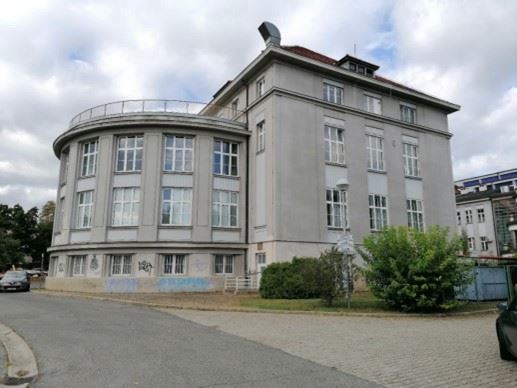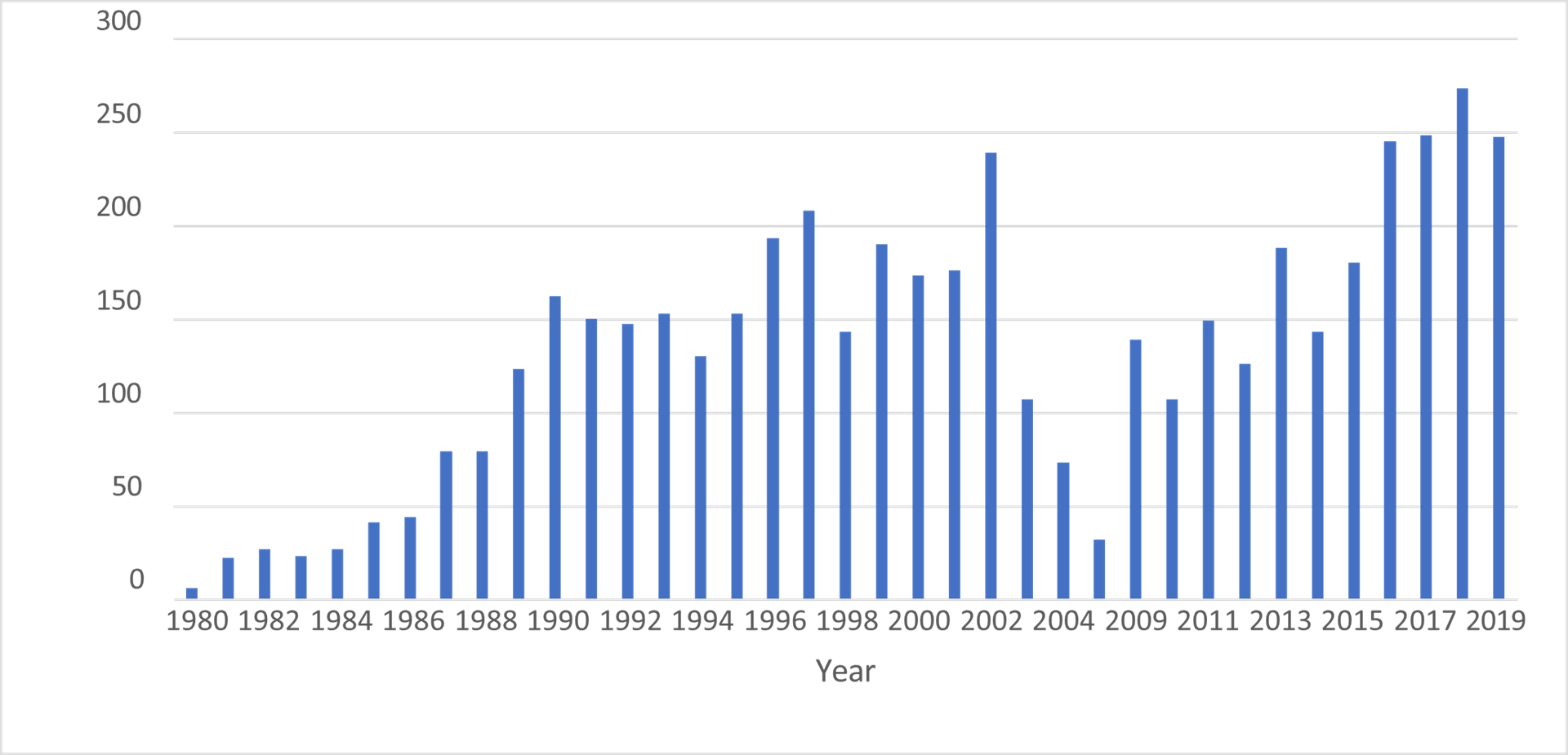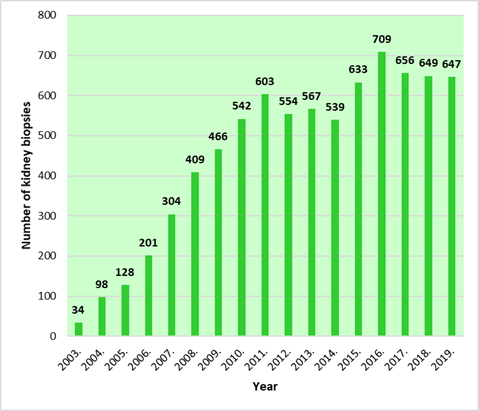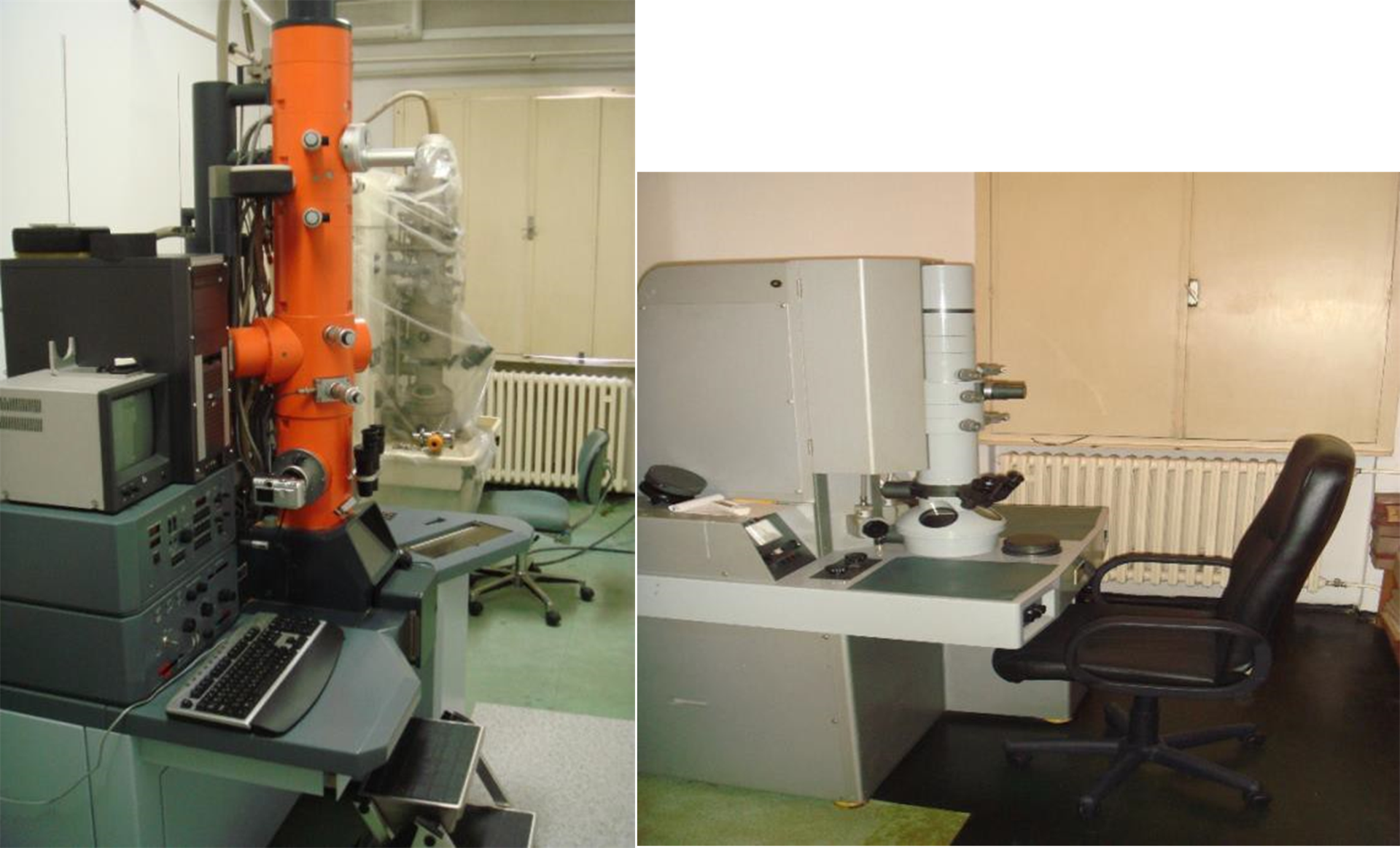History of Electron Microscopy and Renal Pathology at the Department of Pathology, School of Medicine, University of Zagreb and Dubrava University Hospital Zagreb, Croatia
Submitted October 2021 by: Marko Kolić, History MA & Danica Galešić Ljubanović, MD, PhD, professor of pathology The beginnings of electron microscopy in former Yugoslavia date back to 1953, when the electron microscope KM 4 Swiss companies Trüb, Täuber & Co. was purchased for the needs of the Ruđer Bošković Institute in Zagreb, Croatia. This microscope was operated by Zvonimir Devidé, biologist. During his studies in Vienna at the time of the Second World War, Devidé first saw an electron microscope (1). In 1964, Belgrade hosted a meeting to discuss topics in the fields of radiobiology, autoradiography and electron microscopy. On that occasion, Nikola Škreb, director of the Institute of Biology, School of Medicine, University of Zagreb, proposed buying a new electron microscope. It was then decided to buy Elmiskop 1 (Siemens). During the discussion about the location of the new electron microscope, the pathologist Anton Zimolo suggested the Department of Pathology at the Medical School. This proposal was accepted (2). Although the new electron microscope was purchased in 1964 the Laboratory for electron microscopy at the Department of Pathology did not become reality until 1966 when the “Agreement on the establishment and operation of the Laboratory for electron microscopy” was signed. The agreement was signed by Nikola Škreb, the Institute of Biology, Vinko Škarić, the Ruđer Bošković Institute and the dean of the Medical School in Zagreb, Sergej Dogan. The main role of the electron microscopy laboratory was research in biology, medicine and related areas with the most rational use of available resources. The Laboratory opened in 1969 (2). At first, nobody at the Department of Pathology knew how to deal with the new technology. Therefore, scientists at the Ruđer Bošković Institute played an important role in their training. Mercedes Wrischer, Nikola Ljubešić and Branka Vrhovec helped the most. Ivan Damjanov and Mladen Belicza were the first pathologists who used the electron microscope. Besides the two, electron-microscopy technicians Djurdja Jurin, Nevenka Grandić and Dubravka Majsec played an important role in the first decades of the laboratory operation(3). The electron microscope became a useful instrument in practical applications, but also for acquiring new scientific knowledge. But Elmiskop was a too complicated device for medical needs and in 1969 a new electron microscope easier to use was bought, Opton 9. Also, a new LKB ultramikrotom was purchased (1). In 1980 Mira Šćukanec Špoljar, professor of pathology, started her work at the Laboratory for electron microscopy. She was trained in renal pathology by Renée Habib in Paris, France. She dedicated herself from 1980 to 2006 to the systematic development of renal pathology, thus making a pioneering step in this field of pathology in Croatia. Embryologist and neuroscientist Ljiljana Kostović Knežević say Šćukanec Špoljar “was the only expert in kidney pathology at that time” (1). She analyzed kidney biopsy samples by electron microscopy from all over Croatia. She also did light microscopy and immunofluorescence for the majority of kidney biopsies in Croatia. The electron microscopy was performed at the medical school and the light microscopy and immunofluorescence was done at the University Hospital Center. Light microscopy and immunofluorescence were also done at the University Hospital Center in Split by Professor Merica Glavina Durdov and at the University Hospital Centre Rijeka by Professor Gordan Đorđević. From 1980 to 2003 electron microscopy for all kidney biopsies in Croatia was done at the School of Medicine in Zagreb, by Professor Šćukanec. Between 1992 and 2001 Professor Šćukanec was joined by Snježana Čužić, a pathologist who latter concentrated on science and didn’t practice diagnostic renal pathology any longer. Professor Šćukanec retired in 2006. Her work in renal pathology at University Hospital Centre Zagreb continued by associate professor Marijana Ćorić (trained in renal pathology in Basel, Switzerland) and assistant professor Stela Bulimbašić (trained in renal pathology at Arkana Laboratories, Little Rock, USA). Professors Glavina Durdov and Đorđević still do renal pathology in Split and Rijeka. The number of kidney biopsies per year at the Laboratory for Electron Microscopy at the Department of Pathology School of Medicine University Zagreb is shown in Figure 1. Danica Ljubanović was a research assistant at the Department of Pathology, School of Medicine, University of Zagreb (1993-1995). At that time, she met professor Šćukanec Špoljar and found renal pathology fascinating! Thus she pursued further training abroad. After completion of her pathology residency, in 2000 she was awarded the International Society of Nephrology (ISN) renal pathology fellowship and was trained for 18 months (2001 – 2003) in Denver, Colorado [Scott Lucia, Department of Pathology University of Colorado Health Science Center]. In 2003, Dr. Ljubanović upon her return to Zagreb, established the renal pathology laboratory within the premises of Dubrava University Hospital. At that time there was only one electron-microscopy technician Karmela Šuvak, and the electron microscope was 34 years old. A new electron microscope was purchased in 2007. Today, with two renal pathologists (Danica Galešić Ljubanović and Petar Šenjug), four technicians and 650 kidney biopsies per year, this is the largest renal pathology laboratory in Croatia. The number of kidney biopsies per year is shown at Figure 2. In conclusion, electron microscopy in Croatia has a long history, since 1953. In 1980. professor Mira Šćukanec-Špoljar started renal pathology at the Department of Pathology, School of Medicine, of the University of Zagreb. In 2003 professor Danica Galešić Ljubanović started the renal pathology laboratory at the Dubrava University Hospital in Zagreb. Today, the renal pathology in Croatia is well established with six renal pathologists and 900 kidney biopsies per year. References:
Figure 1. Number of kidney biopsies per year at the Laboratory for Electron Microscopy in the Department of Pathology, School of Medicine, University of Zagreb 1980 - 2019
Figure 2. Number of kidney biopsies per year at the Department of renal pathology and electron microscopy at the Dubrava University Hospital Zagreb 2003 - 2019
 Figure 3. Department of Pathology, School of Medicine, University of Zagreb
Figure 4. Electron microscopes in the Electron Microscopy Laboratory within the Department of Pathology, School of Medicine, University of Zagreb, 2007
|







